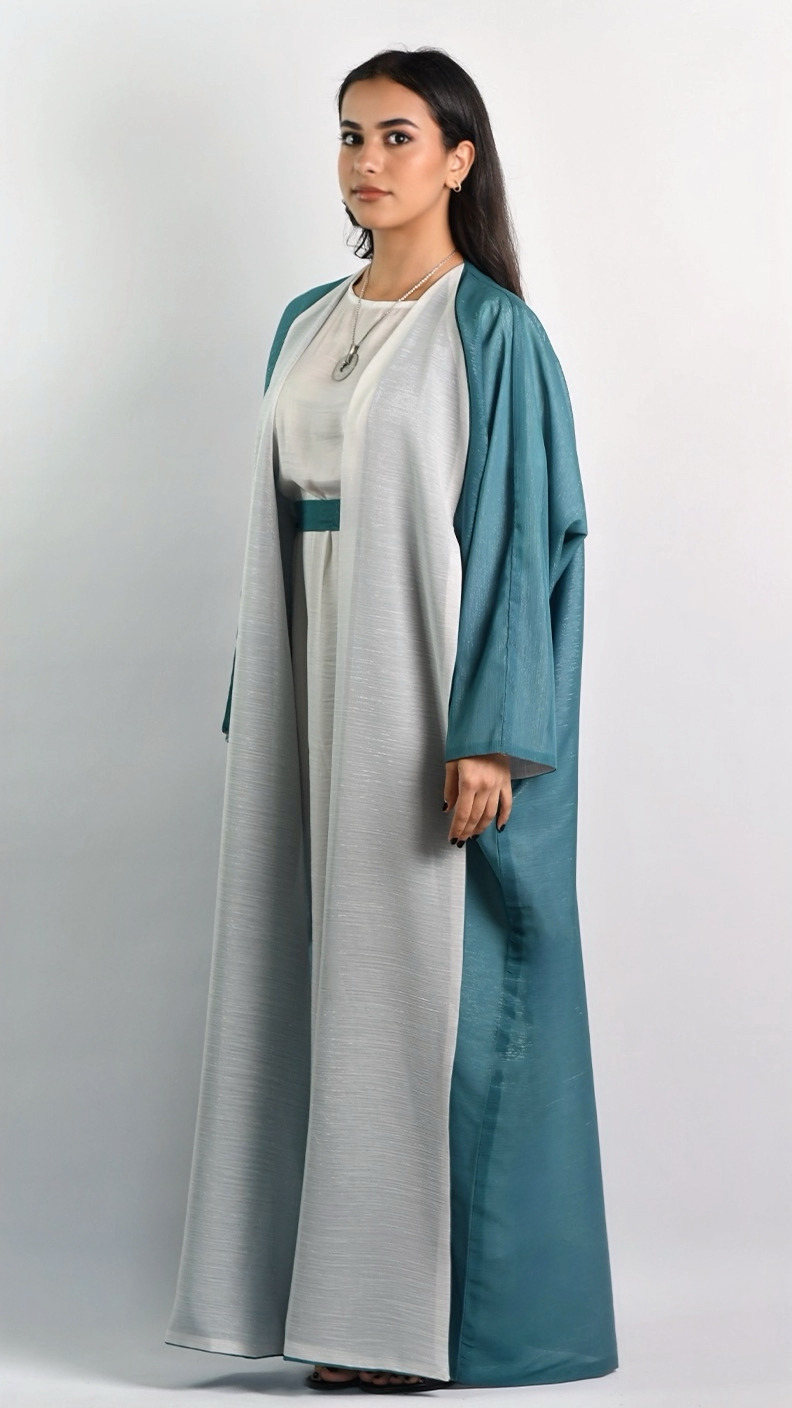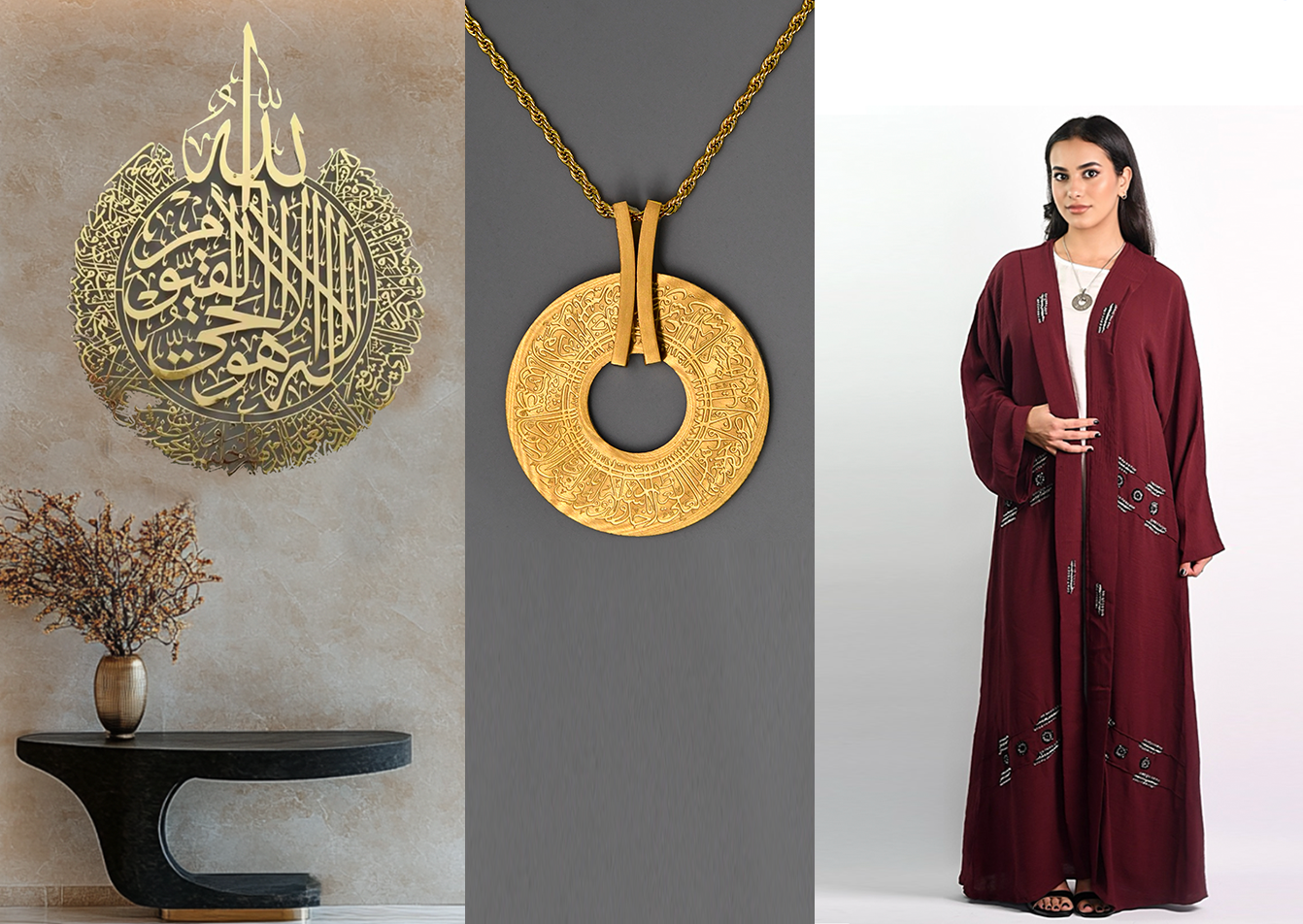Introduction
What makes Arabian jewelry so unique? Arab jewelry is renowned for its detailed craftsmanship, timeless designs, and luxurious elegance. Its intricate designs communicate Arabian culture's rich history and often manifest in artistic geometric designs, intricate chain structures, pendants with common Middle Eastern motifs, or custom calligraphy. These popular designs are unique to Middle Eastern jewelry, blending intricate designs found from traditional inspirations with contemporary style, giving the Arabic gold jewelry that we know and love today. The Middle East is renowned for its high-quality Arabic gold jewelry in 24k. Utilizing 24-karat gold ensures high quality and a bright orange-gold that contributes to the uniqueness and elegance of Arab jewelry. Thus, 24k gold Arabic jewelry, custom Arabic name necklaces, and traditional Arab map jewelry are some of the jewelry trends people are most drawn to. In this blog, we will explore Arab jewelry trends, highlighting key styles for women and men, wedding jewelry traditions, and standout designs from across the Arab world.
Popular Jewelry Trends Among Arab Women
Jewelry in the Middle East differs from the West in that they are typically more intricate, ornate, bold, and rich. Typical traditional Arabic jewelry of the East includes bold designs, large and thick intricate chains, and a deep orange luster from the traditionally used 24-karat gold. Arabic jewelry differs from Western jewelry, which tends to be more straightforward, cute, modern, and lighter-toned yellowy gold typically found in the traditionally used 14-karat or 18-karat gold or even sterling silver. Typical jewelry in the West includes a small pendant on a thin and elementary chain, and these pieces are often layered. Popularizing trends in Arab women’s jewelry find a happy medium between the boldness and intricacies of the East and the clean and minimalist designs of the West. Today, popular Arab women’s jewelry typically maintains the intricacies and ornate designs found in traditional jewelry but on a thinner and smaller scale, making it easy to layer.
Popular Arab women’s and men’s jewelry typically comes in:
-
Custom Arabic Jewelry: Custom Arabic jewelry is an extremely popular choice in the Middle East. Inspired by traditional Arabic calligraphy, Arabic jewelry has capitalized on this traditional stylistic design by incorporating it into modern statement jewelry. Today, you can wear a necklace bearing your or your loved ones' names in any language you choose. Arab women typically wear these pendants on necklaces, rings, or bracelets, but most commonly as necklace pendants.

-
Arabic Calligraphy Jewelry: Arabic calligraphy jewelry is commonly Quranic in the Middle East. These pieces bear important Ayas in the Quran in stylistic calligraphy that is etched into pendants and hung on chains. These pieces are popular because they serve as a spiritual reminder and bear the beauty and elegance in their intricate designs. These types of jewelry typically come on pendants and can be added to any chain of choice.
-
Intricate Chains: Chains are a popular stylistic choice in the Middle East as they symbolize wealth and are a form of investment. Because of this, Arabs have integrated these intricate chains as a modern stylistic choice due to their background as a form of financial investment. Today, many Arab men and women adorn chains in platinum, silver, gold, white gold, or a mix. These chains are easily layerable and interchangeable.
-
Country-Specific Jewelry: Country pride has always been a significant part of Middle Eastern beliefs; jewelry has adopted this pride by representing it. Today, Arabs love to adorn their country of birth or ancestry and layer it with other jewelry that describes their heritage and identity.
Jewelry Trends for Arab Men
Middle Eastern jewelry for men differs from women's because it tends to be more straightforward, using silver or platinum, and generally consists of necklaces, rings, or bracelets. Rings are the most popular jewelry choice for men in the Middle East, as they are minimalist and simple. Rings can become more ornate depending on the country of origin and may feature gemstones such as diamonds and sapphires. Today, there is a growing interest in men's necklaces and chains. These pieces typically feature silver or platinum chains and a pendant or charm that can be significant for one’s identity or heritage. For example, a popular necklace for Lebanese men is a platinum chain with a cedar tree pendant. Other popular options include country-specific map necklaces. The overarching theme in men's jewelry emphasizes minimalist styles and silver-toned colors, which are increasingly popular in the Middle East.

Wedding Jewelry Trends in the Arab World
Arab wedding jewelry differs from everyday jewelry because it is much more ornate, opulent, and bold. For Middle Eastern brides, traditional wedding jewelry tends to be more forward than traditional brides in the West. This conventional Arab jewelry can consist of headpieces, large and chunky layered necklaces, layered bracelets, bangles, earrings, rings, and even anklets. Traditionally, plentiful jewelry for a bride represented beauty, prosperity, and familial pride, contributing to the boldness of Arabic Wedding jewelry. Traditional wedding jewelry in the East heavily differs from wedding jewelry in the West, where brides often wear simple or no jewelry on their wedding night. Today, popular Arab wedding jewelry still consists of ornate and opulent necklaces and bracelets, but at a lesser scale. Arab brides do not typically layer their wedding jewelry but will look for solitaire statement pieces that look good with their dresses.
Popular wedding jewelry trends for guests typically follow those of everyday jewelry, except that wedding jewelry is generally more ornate and matches the wedding guest's outfit. Layering Arabic custom name necklaces with other significant jewelry is a totally acceptable and even popular choice for wedding guest jewelry that gives a trendy look. You can also wear standalone and more ornate jewelry for an elegant look.
Regional Highlights: Jewelry from Different Arab Countries
Jewelry trends can differ depending on the Arab country of origin. Generally, Arab jewelry comprises 24k gold, elaborate and intricate chains, and pendants with Middle Eastern stylistic motifs. However, regional differences in the Middle East contribute to trends in that region.
-
Egyptian Jewelry: Current Egyptian jewelry trends revolve around the love for ancient Egypt and a contemporary approach to the traditional Egyptian jewelry worn then. For example, a typical Egyptian jewelry trend is to wear custom hieroglyphic nameplate jewelry. This jewelry is similar to the custom Arabic name jewelry in its idea but celebrates the art and rich history of Egypt with hieroglyphics. This type of jewelry isn’t exclusive to Egyptians; people worldwide can celebrate Egyptian culture and heritage with their own custom hieroglyphic name necklace. These beautiful and unique pieces showcase heritage, identity, and love for the rich Egyptian history.
-
Lebanese Jewelry: Lebanese jewelry trends revolve around elegance, adornment, and heritage. A familiar Lebanese motif, the cedar tree, is a beautiful emblem adorned around the country that represents the strength and unity of the Lebanese people. This everyday emblem, primarily found on their country flag, is celebrated with jewelry such as a necklace, pendant, ring, or other piece. Men and women commonly parade this emblem as a necklace pendant. They even love to layer it with other emblems of heritage, identity, and pride, such as Lebanon map necklaces, turquoise “evil-eye” inspired jewelry, and custom Arabic name necklaces.
-
Syrian Jewelry: Syrian jewelry trends follow Lebanese jewelry, except with Syria-centric motifs. For example, a Syrian woman could wear a layered necklace set with her name in Arabic, an “evil-eye” inspired necklace, or a country map necklace of Syria. Typically, jewelry trends in the Levant draw inspiration from one another and translate those ideas into their own national stories.
Modern Meets Traditional: Custom Jewelry in the Arab World
Arabic jewelry is not standalone; you can mix and match your jewelry with traditional Arabic jewelry to create your style. This mixing and matching birthed the modern blending of traditional Arabic jewelry with contemporary styles. Popular custom options include:
-
Arabic Name Jewelry: Personalized Arabic name jewelry is one of the most popular jewelry trends throughout the Middle East. This type of jewelry expresses individualism and celebrates heritage and identity. These types of custom name jewelry do not need to be in Arabic; you can choose any meaningful language. At Noureem, we can make custom Arabic jewelry (or other languages) into necklaces, bracelets, or as engravings on pendants, bracelets, and rings. We can also make this jewelry with gold plating or silver. This type of jewelry can be standalone or layered with other pieces meaningful to you.

-
Arab map necklaces: Arab Map necklaces are beautiful pieces celebrating identity with designs featuring country outlines. You can choose any meaningful country and have it personalized with your name or any name meaningful to you. These pieces are also excellent for layering because of their sleek designs and their edgy contrast to other pieces.

-
Arabic and English Initials Necklaces: These pendants give a modern take on bilingual designs. At Noureem, we offer you an option to choose from many Arabic and English fonts to create trendy and edgy bubble necklace designs for your initials. These designs are one-of-a-kind and make for a perfect layering piece on your set, a beautiful standalone necklace pendant, or a unique gift to a friend or family member. We also create initials pendants in gold plating and silver.

Materials and Designs Driving the Trends
The West has a growing love for 24k gold Arabic jewelry. The alluring orange hue of 24-karat gold, intricate designs, and detailed craftsmanship have captivated both men and women for centuries. Globalization has sparked an increasing interest in these designs within the West. The West's interest in Middle Eastern jewelry emerged with the “evil-eye” motif and is now moving towards custom nameplate jewelry and country map necklaces.
Explore and Shop Custom Arab Jewelry
Whether you're looking for a custom Arabic name necklace, Ayatul Kursi necklace, traditional Egyptian jewelry, country map necklaces, or custom Arabic initials necklaces, our collection offers something for everyone. Discover the beauty of Arab jewelry today and celebrate your heritage with style.




